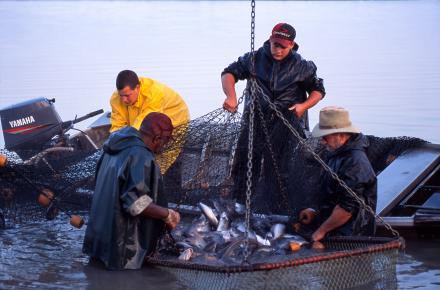Making Catfish Farming More Profitable

U.S. catfish farming is a national industry with 624 commercial farmers in 32 States producing over 385 million pounds of catfish in 2016, valued at $363 million. Most of that production is on small, family-owned operations averaging only 160 "water acres."
USDA classifies 84 percent of these catfish farms as small businesses, with annual sales of less than $500,000, and 38 percent with annual revenues of less than $25,000. These farmers have survived due to increases in production efficiency through innovative technologies such as those developed by ARS scientists in Stoneville, MS, and their collaborators at Mississippi State University.
ARS scientists are making these operations more efficient, profitable, and environmentally friendly by developing new systems that recirculate water. These "split-pond" systems have two adjoined sections: a small end that houses the fish and a large end with water and no fish. To eliminate waste from the pond, water containing dissolved and solid fish waste circulates from the small end of the pond for treatment in the large end. The water is then recirculated to the fish. Split ponds reduce the amount of water and land used for fish production and give producers greater control over the pond environment. They also give the fish a better chance to stay healthy and grow to marketable sizes.
Farmers who have adopted the new "split-pond" system advanced by ARS researchers have seen their annual production levels rise to over 12,000 pounds of catfish per acre, more than twice the levels in traditional ponds.
Related Information
Research Project: Water Quality and Production Systems to Enhance Production of Catfish



